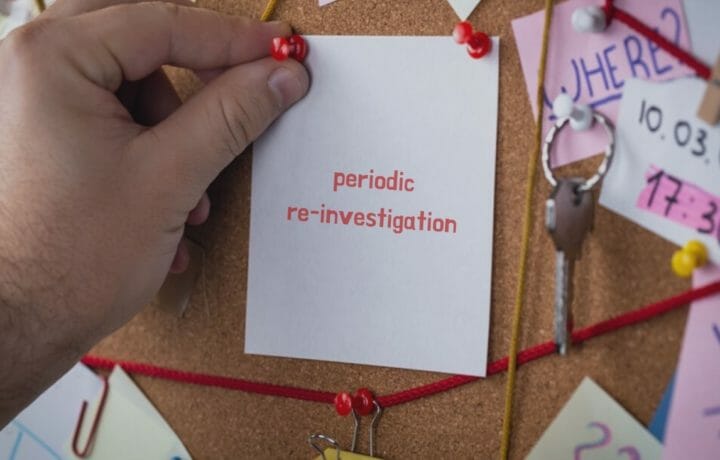Just when you thought it was safe to exhale, it creeps back into your life. Uninvited, unsettling, and often arriving quicker than you expect it. No, I’m not talking about your ex texting you at 2 a.m.
I’m talking about a Periodic Reinvestigation (PR): the original security clearance jump scare.
Newbies in the cleared world may not have ran into the PR – but 5-10 years ago it was a perfectly common reset for anyone cleared in national security.
One ClearanceJobsBlog subscriber writes
So, I had my most recent PR done in May for SOUTHCOM Contract. The EQIP was DCSA. I filed my records with them and they responded that they don’t have any record of it and that it may have been done by another org, but they don’t know. All DOD is done by DCSA other than Agencies. It definitely was not an IC agency. Any ideas?
Read the full thread here.
Marko Hakamma says, “In current times, PRs are not being done unless there are specific known issues. What DCSA does is initiate the SF-86 in eAPP, has the applicant certify it, and then they review it for any flags or issues. If none, then it is canceled, and the applicant continues enrollment in Continuous Evaluation.”
If you’ve ever held a security clearance, you know the process to get one is like a high-stakes version of “This Is Your Life.” Every decision you’ve made since high school gets put under a microscope: credit card debt, ex-spouses, foreign contacts, even your social media sleuthing. It’s an investigative deep dive worthy of its own docuseries.
But here’s the kicker: even after you pass, the government doesn’t just hand you a badge and wave goodbye. Security clearance comes with a silent partner. What was once called a Periodic Reinvestigation. It lingers in the background, waiting. Watching. Planning its return.
Traditionally, PRs were on a pretty predictable schedule:
- Top Secret: every 5 years
- Secret: every 10 years
Like birthdays, they’d arrive whether you were ready or not. A friendly little reminder that trust is earned—and re-earned.
Then came the Trusted Workforce 2.0 initiative, and suddenly everything changed. PRs are no longer the only game in town. The government is now embracing Continuous Vetting—a real-time, always-on system that monitors cleared personnel for red flags before things spiral.
PR: What It Really Means
Let’s be clear (no pun intended): a PR isn’t an accusation. It was a routine refresh, a way to make sure you’re still the person they trusted with state secrets five, ten, or fifteen years ago.
What does it involve?
- A fresh SF-86 (yes, again)
- Credit and criminal history checks
- Interviews with people who know you
- Questions that make you rethink your life choices and maybe even your coffee order
It’s the clearance world’s version of “So…what have you been up to lately?” With the height of the backlog, however, it was bye bye to traditional PRs (unless necessary) and HELLO to CV.
It’s just Uncle Sam checking in. Again.
This question was posed from a subscriber at ClearanceJobsBlog.com, where you can read and discuss government security clearance process, how to get a security clearance job, and background investigations issues.
Much about the clearance process resembles the Pirate’s Code: “more what you’d call guidelines than actual rules.” This case-by-case system is meant to consider the whole person, increase process security, and allow the lowest-risk/highest-need candidates to complete the process. This article is intended as general information only and should not be construed as legal advice. Consult an attorney regarding your specific situation.




